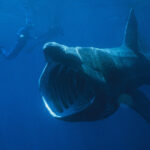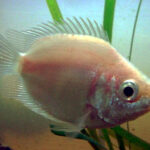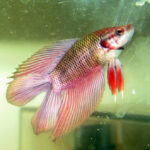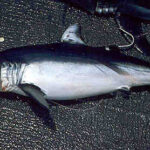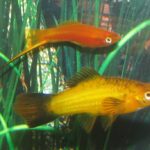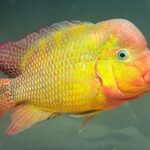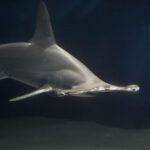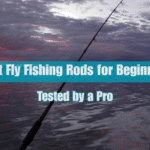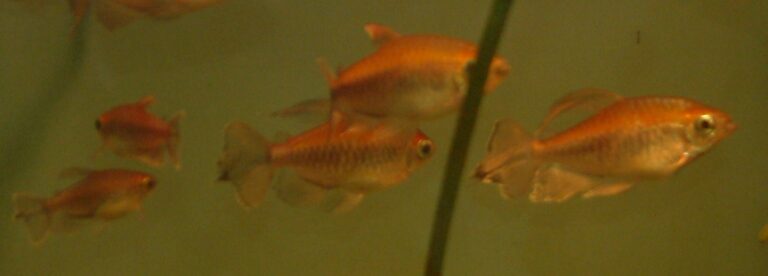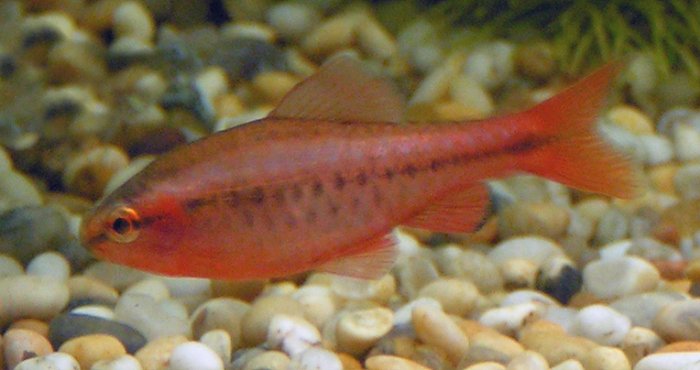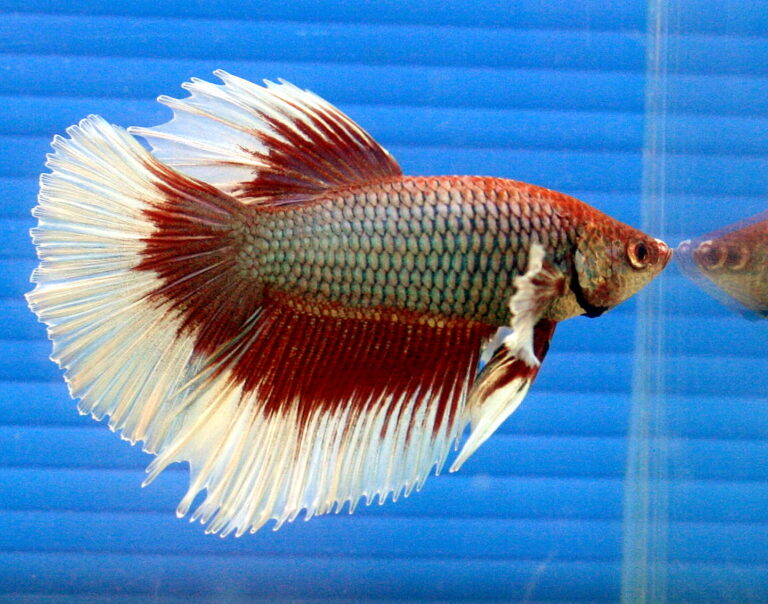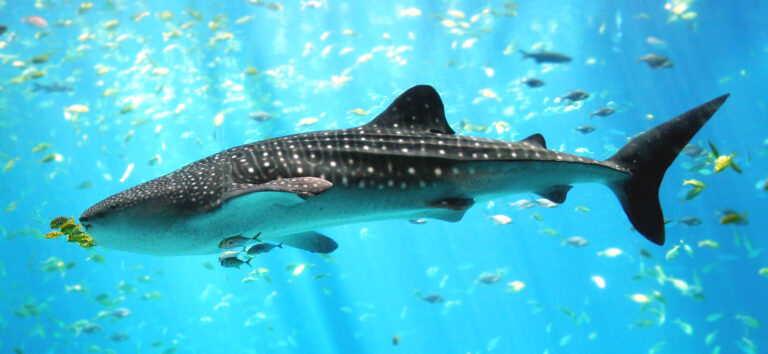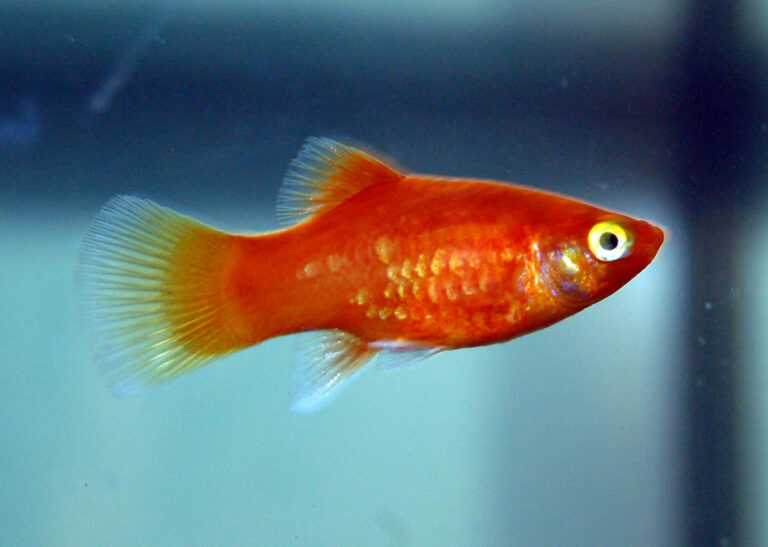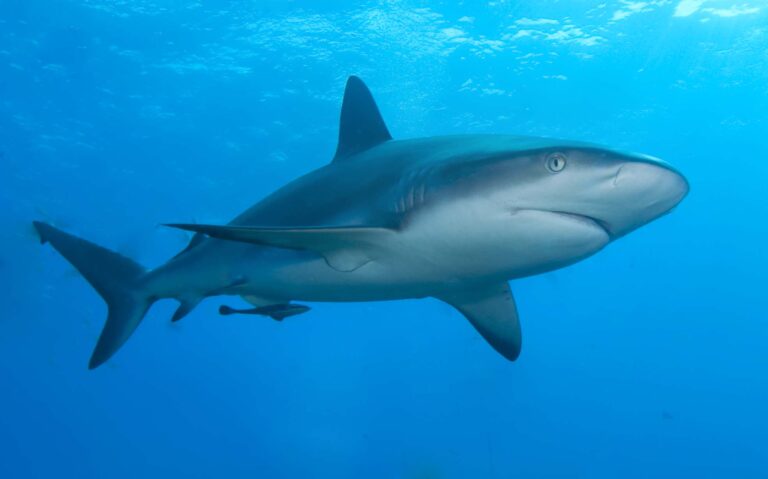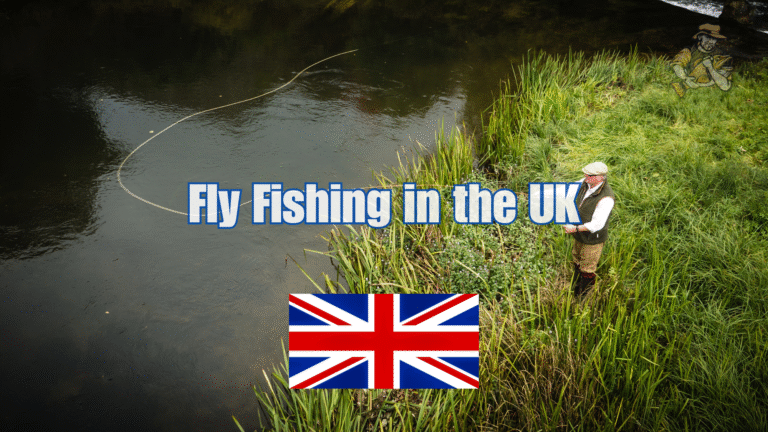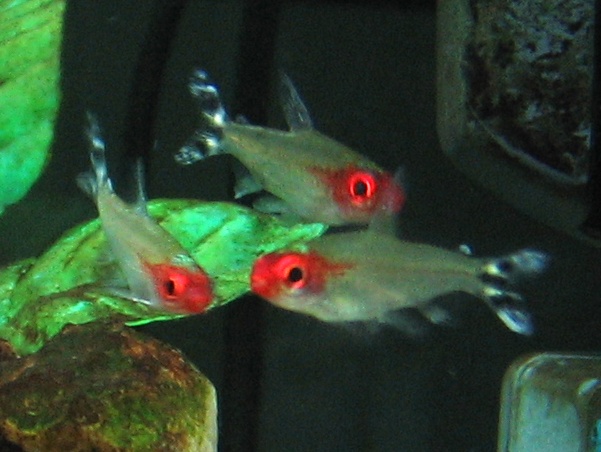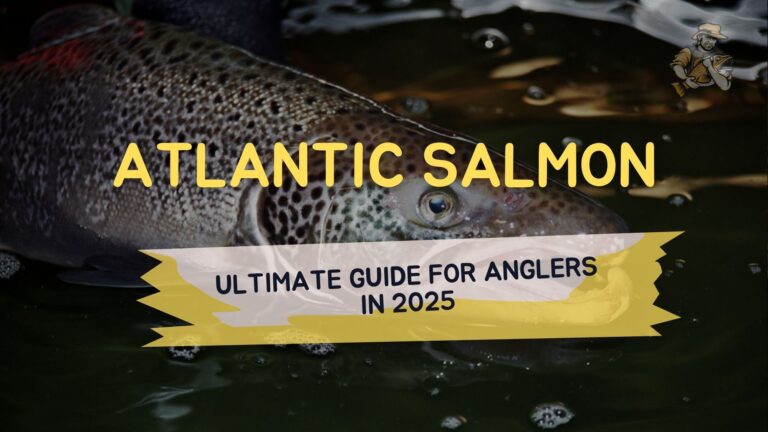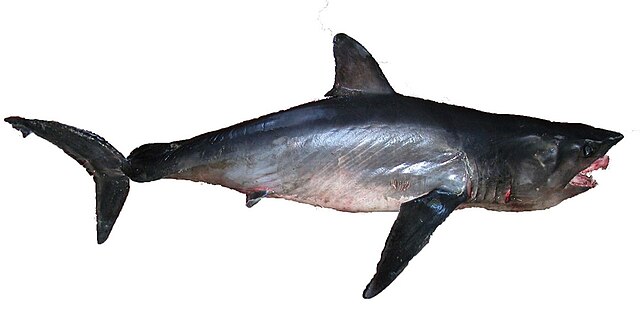Dwarf Gourami
By Ryan Maron | Last Modified: June 10, 2025

The Dwarf Gourami (Trichogaster lalius) stands as one of the most popular freshwater aquarium fish species, renowned for its vibrant coloration, peaceful temperament, and fascinating behavioral adaptations. Native to the slow-moving waters of South Asia, this labyrinth fish has captured the attention of aquarists worldwide while playing a crucial ecological role in its natural habitat as both predator and prey within complex freshwater ecosystems.
Originally discovered in the river systems of India, Bangladesh, and Pakistan, the Dwarf Gourami represents a prime example of successful adaptation to oxygen-poor environments through specialized respiratory mechanisms. This species serves as an important component of shallow water food webs, controlling insect populations while providing sustenance for larger predatory fish. The commercial aquarium trade has elevated this species to international prominence, making it one of the most recognizable anabantoid fish in the hobby.
| Feature | Details |
|---|---|
| Common Name | Dwarf Gourami |
| Scientific Name | Trichogaster lalius |
| Family | Osphronemidae |
| Typical Size | 5-9 cm (2-3.5 inches), 15-25 grams |
| Habitat | Shallow, vegetated freshwater systems |
| Diet | Omnivorous – insects, larvae, plant matter |
| Distribution | South Asia: India, Bangladesh, Pakistan |
| Conservation Status | Least Concern |
Taxonomy & Classification
The Dwarf Gourami belongs to the family Osphronemidae, commonly known as gourami fish or labyrinth fish. This taxonomic classification places Trichogaster lalius within a specialized group of freshwater fish characterized by their unique labyrinth organ, an evolutionary adaptation that allows them to breathe atmospheric oxygen directly from the water surface.
Originally described by Francis Buchanan-Hamilton in 1822, the species has undergone several taxonomic revisions throughout scientific history. The genus Trichogaster encompasses several closely related species, with T. lalius distinguished by its smaller adult size and distinctive coloration patterns. Recent molecular studies have confirmed the species’ phylogenetic position within the subfamily Trichogastrinae, supporting its classification as a distinct species separate from larger gourami relatives.
The family Osphronemidae represents an ancient lineage of perciform fish that evolved approximately 50 million years ago during the Eocene epoch. This evolutionary heritage explains the sophisticated respiratory adaptations observed in modern Dwarf Gourami populations. Genetic analysis reveals significant population structure across the species’ natural range, with distinct haplotype groups corresponding to major river systems throughout South Asia.
Physical Description
Adult Dwarf Gourami exhibit pronounced sexual dimorphism, with males displaying significantly more vibrant coloration than their female counterparts. Males typically reach lengths of 7-9 centimeters, featuring brilliant blue and red vertical stripes across their compressed, oval-shaped bodies. The distinctive coloration intensifies during breeding periods, with dominant males developing deep crimson ventral regions and electric blue dorsal areas.
Female Dwarf Gourami present more subdued coloration, generally reaching 5-7 centimeters in length with silvery-blue bodies marked by faint vertical striping. Both sexes possess the characteristic thread-like ventral fins that serve as specialized sensory organs, capable of detecting chemical gradients and physical obstacles in murky water conditions. These modified pelvic fins contain numerous chemoreceptors and mechanoreceptors that enhance environmental awareness.
The species exhibits the typical anabantoid body structure, with a laterally compressed profile adapted for maneuvering through dense aquatic vegetation. The labyrinth organ, housed within the gill chambers, consists of folded bony plates lined with highly vascularized tissue. This specialized respiratory structure enables efficient oxygen extraction from atmospheric air, providing a crucial survival advantage in oxygen-depleted waters. The caudal fin displays a distinctive rounded shape, while the anal and dorsal fins extend along much of the body length, providing precise swimming control in complex underwater environments.
Habitat & Distribution
Dwarf Gourami inhabit the shallow, slow-moving freshwater systems throughout the Indian subcontinent, with natural populations documented across northern India, Bangladesh, and eastern Pakistan. These fish show strong preference for heavily vegetated areas including rice paddies, irrigation canals, wetlands, and the backwater regions of major river systems such as the Ganges, Brahmaputra, and Indus watersheds.
The species thrives in warm, tropical waters with temperatures ranging from 22-28°C (72-82°F) and slightly acidic to neutral pH levels between 6.0-7.5. Natural habitats typically feature soft to moderately hard water with total dissolved solids ranging from 50-200 ppm. Dense aquatic vegetation provides essential cover from predators while supporting the diverse invertebrate communities that form the foundation of Dwarf Gourami feeding ecology.
Seasonal flooding patterns significantly influence habitat availability and population dynamics throughout the species’ range. During monsoon periods, expanding water levels provide access to terrestrial areas where fallen fruits and insects supplement natural diets. Conversely, dry season habitat compression concentrates fish populations in permanent water bodies, intensifying competition for resources and breeding territories. These environmental pressures have shaped the species’ remarkable adaptability to fluctuating water conditions and variable food availability.
Human agricultural activities have created extensive artificial habitats that support thriving Dwarf Gourami populations. Rice cultivation systems throughout South Asia provide ideal shallow-water environments with abundant food sources and minimal predation pressure. This agricultural symbiosis has likely contributed to the species’ stable conservation status despite ongoing habitat modifications across its native range.
Diet & Feeding Behavior
Dwarf Gourami exhibit opportunistic omnivorous feeding behavior, consuming a diverse array of prey items that vary seasonally based on availability and environmental conditions. Primary food sources include mosquito larvae, chironomid larvae, small crustaceans, aquatic worms, and various planktonic organisms. Plant matter constitutes approximately 30-40% of the natural diet, including algae, soft plant tissues, and fallen terrestrial fruits during flood seasons.
Foraging behavior demonstrates remarkable adaptability to different feeding opportunities throughout the water column. Surface feeding frequently targets floating insects and larvae, with fish using their upward-angled mouths to capture prey at the water-air interface. Mid-water foraging focuses on copepods, rotifers, and other zooplankton, while benthic feeding involves sifting through substrate materials for buried invertebrates and decomposing organic matter.
The species exhibits distinct diurnal feeding patterns, with peak activity occurring during early morning and late afternoon periods when prey density typically reaches maximum levels. Gourami feeding strategies involve both active hunting and opportunistic scavenging, depending on prey type and environmental conditions. Males often establish temporary feeding territories around productive foraging areas, displaying aggressive behavior toward conspecifics during periods of resource scarcity.
Specialized sensory adaptations enhance feeding efficiency in turbid water conditions common throughout natural habitats. The thread-like ventral fins function as chemotactile organs, detecting chemical trails left by potential prey items and identifying suitable feeding locations. This sensory capability proves particularly valuable during low-visibility periods when visual hunting becomes impractical.
Behavior & Adaptations
Dwarf Gourami demonstrate complex social behaviors that vary significantly based on environmental conditions, population density, and reproductive status. Males establish territorial boundaries during breeding seasons, defending areas of approximately 0.5-1 square meters around suitable nesting sites. Territorial displays involve fin spreading, body darkening, and ritualized swimming patterns designed to communicate dominance without engaging in potentially harmful physical confrontations.
The species exhibits remarkable environmental adaptability through behavioral modifications that optimize survival under varying conditions. During periods of low dissolved oxygen, individuals increase surface breathing frequency while reducing overall activity levels to conserve energy. Temperature fluctuations trigger corresponding changes in metabolic rates, with fish adjusting feeding intensity and territorial behavior accordingly.
Social hierarchies develop within established populations, particularly in confined spaces where escape opportunities remain limited. Dominant males typically occupy prime territorial locations with optimal access to food resources and suitable breeding sites. Subordinate individuals adopt more cautious behavioral patterns, avoiding direct confrontation while exploiting marginal habitats less desirable to dominant fish.
The labyrinth organ represents the species’ most significant physiological adaptation, enabling survival in oxygen-poor environments that would prove lethal to most other fish species. This specialized respiratory system allows Dwarf Gourami to colonize shallow, stagnant waters with minimal competition from oxygen-dependent species. Regular surface breathing behavior helps maintain optimal blood oxygen levels while providing independence from gill-based respiration during environmental stress periods.
Predator avoidance strategies include rapid escape responses, cryptic coloration when threatened, and utilization of dense vegetation cover. Juvenile fish exhibit schooling behavior that provides protection through group vigilance and predator confusion effects, while adults rely more heavily on territorial knowledge and individual escape tactics.
Reproduction & Life Cycle
Dwarf Gourami breeding behavior centers around the construction of elaborate bubble nests created by males during reproductive periods. These floating structures, composed of air bubbles held together by sticky saliva secretions, typically measure 5-10 centimeters in diameter and serve as protective environments for developing eggs and larvae. Nest construction occurs in shallow, calm water areas with temperatures between 26-30°C, often among floating vegetation that provides structural support and camouflage.
Courtship rituals involve complex behavioral displays where males exhibit intensified coloration while performing intricate swimming patterns designed to attract females to nest sites. Successful courtship leads to spawning events where females release 300-800 eggs that males immediately fertilize and collect in their bubble nests. The entire spawning process typically requires 2-4 hours, with males showing remarkable dedication to egg care and nest maintenance throughout the incubation period.
Parental care remains exclusively male responsibility, with fathers aggressively defending nest territories while continuously tending to developing eggs. Males repair damaged bubble nest structures, remove unfertilized or fungus-infected eggs, and maintain optimal water conditions through specialized behaviors. Incubation periods last 24-36 hours depending on water temperature, with higher temperatures supporting faster development rates.
Newly hatched larvae remain attached to nest structures for 2-3 days while absorbing their yolk sacs, during which time males continue protective behaviors and nest maintenance activities. Free-swimming fry begin independent feeding on microscopic organisms including infusoria, rotifers, and newly hatched brine shrimp. Juvenile growth rates depend heavily on food availability and environmental conditions, with sexual maturity typically achieved at 4-6 months of age.
Population reproductive success shows strong correlations with seasonal flooding patterns that provide optimal breeding conditions and abundant food resources for developing young. Multiple spawning events throughout the breeding season allow successful pairs to produce 3-5 broods annually under favorable environmental conditions.
Predators & Threats
Natural predation pressure on Dwarf Gourami populations comes from various sources throughout different life stages, with vulnerability patterns changing significantly as fish develop from vulnerable fry to reproductively mature adults. Juvenile fish face intense predation from larger fish species including snakeheads, catfish, and various cyprinid species that inhabit similar shallow-water environments.
Adult Dwarf Gourami encounter predation primarily from birds, particularly kingfishers, herons, and egrets that hunt in shallow wetland areas. Aquatic predators include larger gourami species, predatory catfish, and introduced species such as largemouth bass in modified habitats. The species’ small size and surface-breathing behavior create vulnerability windows that predators exploit, particularly during daylight hours when visual detection becomes easier.
Environmental threats represent increasingly significant challenges to wild populations across the species’ native range. Agricultural intensification has led to widespread pesticide contamination in rice-growing regions, with organophosphate and carbamate compounds showing particular toxicity to labyrinth fish. Water pollution from industrial sources contributes heavy metals and chemical contaminants that bioaccumulate in food webs, ultimately affecting reproductive success and population health.
Habitat modification through drainage projects, dam construction, and urban development continues to reduce available spawning and nursery areas throughout traditional range areas. Climate change impacts include altered precipitation patterns that affect seasonal flooding cycles crucial for reproductive success and juvenile survival. Temperature increases may push some populations beyond optimal thermal tolerance ranges, particularly in already-warm tropical regions.
Invasive species introductions create additional competitive pressure and predation threats in modified ecosystems. Non-native fish species often lack the specialized adaptations that allow Dwarf Gourami to exploit oxygen-poor environments, but they may dominate in higher-quality habitats or introduce novel diseases to naive populations.
Conservation Status
The International Union for Conservation of Nature (IUCN) currently classifies the Dwarf Gourami as “Least Concern” based on stable population trends across most of its native range and the species’ adaptability to modified habitats. However, regional assessments reveal concerning population declines in heavily industrialized areas where water quality degradation and habitat loss have intensified over recent decades.
Population stability primarily results from the species’ remarkable tolerance for environmental variability and its ability to exploit agricultural habitats that have expanded throughout South Asia. Rice cultivation systems provide extensive shallow-water environments that support breeding populations while offering protection from many traditional predators. This agricultural symbiosis has likely prevented more severe population declines that might otherwise result from natural habitat loss.
Ongoing monitoring efforts focus on assessing population trends in key watershed areas and evaluating the effectiveness of existing protected area networks in conserving representative Dwarf Gourami habitats. Research priorities include investigating the long-term impacts of agricultural chemicals on reproductive success and examining genetic diversity patterns across fragmented populations.
Conservation recommendations emphasize maintaining water quality standards in agricultural regions, preserving wetland connectivity for population exchange, and implementing sustainable fishing practices in subsistence fisheries where Dwarf Gourami contribute to local food security. International cooperation remains essential for addressing transboundary conservation challenges in major river systems that cross multiple national boundaries.
The commercial aquarium trade provides both opportunities and challenges for species conservation. Captive breeding programs reduce pressure on wild populations while maintaining genetic diversity in laboratory settings, but escaped aquarium fish have established populations outside native ranges with unknown ecological consequences.
Human Interaction
The relationship between Dwarf Gourami and human populations spans centuries of coexistence in agricultural landscapes throughout South Asia, where these fish play beneficial roles in mosquito control while serving as supplemental protein sources for rural communities. Traditional rice farming systems rely on Dwarf Gourami to control pest insect populations, creating mutually beneficial relationships that support both agricultural productivity and fish population stability.
Commercial aquarium trade represents the most significant form of modern human interaction with Dwarf Gourami, with millions of individuals exported annually to supply international markets. Betta fish breeding techniques have influenced gourami breeding programs, leading to the development of numerous color varieties and fin types that differ dramatically from wild populations. Selective breeding has produced flame, powder blue, neon, and rainbow color morphs that command premium prices in specialty markets.
Aquaculture operations throughout Southeast Asia have established large-scale breeding facilities that supply both domestic and international demand for aquarium specimens. These commercial breeding programs help reduce pressure on wild populations while supporting local economies in rural areas where alternative employment opportunities remain limited. Quality control measures ensure disease-free stock while maintaining genetic diversity through periodic introduction of wild-caught breeding pairs.
Scientific research applications utilize Dwarf Gourami as model organisms for studying labyrinth fish physiology, reproductive behavior, and environmental adaptation. University research programs investigate the species’ unique respiratory adaptations, social behavior patterns, and responses to environmental stressors. This research contributes valuable insights into fish biology while supporting conservation planning efforts.
Educational applications in schools and public aquariums help promote awareness of freshwater biodiversity and conservation issues affecting South Asian ecosystems. Teaching children about aquatic life through Dwarf Gourami care provides hands-on learning opportunities that foster environmental stewardship attitudes.
Interesting Facts
Dwarf Gourami possess extraordinary sensory capabilities that extend far beyond typical fish perception, including the ability to detect electrical fields generated by other organisms through specialized electroreceptors located in their lateral line systems. This adaptation proves particularly valuable for locating prey in murky water conditions where visual hunting becomes impractical.
The species demonstrates remarkable learning abilities and memory retention, with individuals capable of recognizing specific locations, remembering feeding schedules, and even distinguishing between different human caretakers in aquarium settings. Laboratory studies have documented problem-solving behaviors including maze navigation and tool use for accessing food rewards in experimental conditions.
Male Dwarf Gourami exhibit unique vocalization abilities, producing clicking and croaking sounds during territorial disputes and courtship activities. These sounds result from specialized muscles that vibrate the swim bladder, creating acoustic signals that travel effectively through water. Different sound patterns convey specific information about individual size, reproductive status, and aggressive intentions.
The labyrinth organ represents one of nature’s most efficient air-breathing adaptations, allowing Dwarf Gourami to extract up to 80% of their oxygen requirements directly from atmospheric air. This capability enables survival in water with dissolved oxygen levels as low as 1-2 parts per million, conditions that would quickly prove fatal to most other freshwater fish species.
Color-changing abilities allow Dwarf Gourami to modify their appearance based on environmental conditions, emotional states, and social situations. Stress-induced color changes can occur within seconds, while longer-term adaptations to different substrate colors or lighting conditions develop over several days. These chromatophore-controlled changes serve both camouflage and communication functions.
Wild Dwarf Gourami have been observed using primitive tool-use behaviors, including spitting water to knock insects from overhanging vegetation and manipulating plant materials to construct more elaborate bubble nest structures. These behaviors suggest cognitive abilities that rival those documented in much larger fish species.
Frequently Asked Questions
How long do Dwarf Gourami typically live in captivity compared to wild conditions?
Captive Dwarf Gourami generally live 4-6 years under optimal aquarium conditions, while wild populations typically experience shorter lifespans of 2-4 years due to predation pressure, environmental stressors, and disease exposure. Proper aquarium management including stable water parameters, appropriate diet, and disease prevention can extend captive lifespans beyond wild expectations.
Can Dwarf Gourami survive in outdoor ponds in temperate climates?
Dwarf Gourami require minimum temperatures above 18°C (64°F) for long-term survival and cannot tolerate freezing conditions that occur in temperate winter climates. While they may survive summer months in outdoor ponds, temperature drops below their thermal tolerance range prove fatal. Their tropical origin necessitates heated indoor environments for year-round maintenance in non-tropical regions.
What makes Dwarf Gourami different from other gourami species in terms of care requirements?
Dwarf Gourami require smaller aquarium spaces due to their compact size but need gentler water flow compared to larger gourami species. They show greater sensitivity to water quality fluctuations and require more frequent monitoring of ammonia and nitrite levels. Unlike schooling tetras, Dwarf Gourami prefer territories with adequate hiding spots and can exhibit aggression toward similar-sized tankmates during breeding periods.
How can aquarists encourage natural breeding behavior in captive Dwarf Gourami?
Successful breeding requires providing shallow, warm water (26-30°C), floating plants or materials for bubble nest construction, and conditioning breeding pairs with high-quality foods including live or frozen invertebrates. Separating sexes for 1-2 weeks before breeding attempts helps stimulate natural courtship behaviors, while gradual water level reduction mimics dry season conditions that trigger reproductive instincts in wild populations.
Conclusion
The Dwarf Gourami exemplifies successful evolutionary adaptation to challenging freshwater environments while maintaining crucial ecological functions as both predator and prey within South Asian aquatic ecosystems. Despite facing increasing environmental pressures from habitat modification and pollution, the species’ remarkable physiological adaptations and behavioral flexibility have enabled stable population maintenance across most of its native range. Continued conservation efforts focusing on water quality protection and habitat connectivity will prove essential for ensuring long-term population viability in an increasingly modified landscape.
Share The Article:
More Fish Species:
-
Congo Tetra
The Congo Tetra stands as one of Africa’s most remarkable freshwater fish species, captivating aquarists and ichthyologists alike with…
-
Cherry Barb
The Cherry Barb (*Puntius titteya*) stands as one of the most recognizable and ecologically significant small cyprinid species in…
-
Half Moon Betta
The Half Moon Betta (Betta splendens) represents one of the most distinctive and sought-after varieties within the Siamese fighting…
-
Whale Shark
The whale shark (*Rhincodon typus*) stands as the ocean’s largest fish species, representing one of nature’s most remarkable gentle…
-
Diamond Tetra
The Diamond Tetra (Moenkhausia pittieri) stands as one of the most captivating freshwater fish species in the aquarium trade…
-
Coral Platy
The Coral Platy (Xiphophorus maculatus) represents one of the most recognizable and beloved freshwater aquarium fish in the world….
Discover
-
Caribbean Reef Shark
The Caribbean Reef Shark (*Carcharhinus perezi*) stands as one of the most recognizable and ecologically significant predators patrolling the…
-
Fishing with Kids: How to Make It Fun and Educational
I’ll never forget the look on my son Tommy’s face when he caught his first bluegill. He was six,…
-
Fly Fishing in the UK: Top Rivers and Seasonal Patterns
After nearly three decades casting flies across waters from Michigan to Maine – and now spending several weeks each…
-
Kayaking Fishing: Ultimate Guide for Water Adventurers
There’s something magical about gliding across the water in a kayak with a fishing rod in hand. The stealthy…
-
Best Fishing Reels for Any Budget: Complete Guide 2025
When it comes to finding the best fishing reels, quality doesn’t always mean emptying your wallet. After testing hundreds…
-
Mastering Fishing Casting Techniques: Complete Guide
Have you ever watched someone cast their line with perfect precision while you struggle to avoid tangling yours in…
Discover
-
Rummy Nose Tetra
The Rummy Nose Tetra stands as one of the most distinctive and recognizable small freshwater fish species in South…
-
What do You Need for Fishing in 2025? | Essential Gear for Beginners and Veterans
As I was organizing my tackle box last weekend for an early spring trip to Lake Michigan, I realized…
-
Atlantic Salmon: Ultimate Guide for Anglers in 2025
For as long as I can remember, I’ve been captivated by Atlantic salmon fishing. There’s something almost mystical about…
-
Beluga Fishing: Techniques That Actually Work (Not Theory)
When it comes to beluga fishing, there’s a world of difference between what you read in theory and what…
-
Longfin Mako Shark
The Longfin Mako Shark represents one of nature’s most enigmatic and misunderstood predators, embodying both the raw power and…
-
How to Fish a Jellyfish: Safe Methods & Expert Tips
Jellyfish fishing is a specialized niche within the broader world of angling that requires unique techniques, specific knowledge, and…

